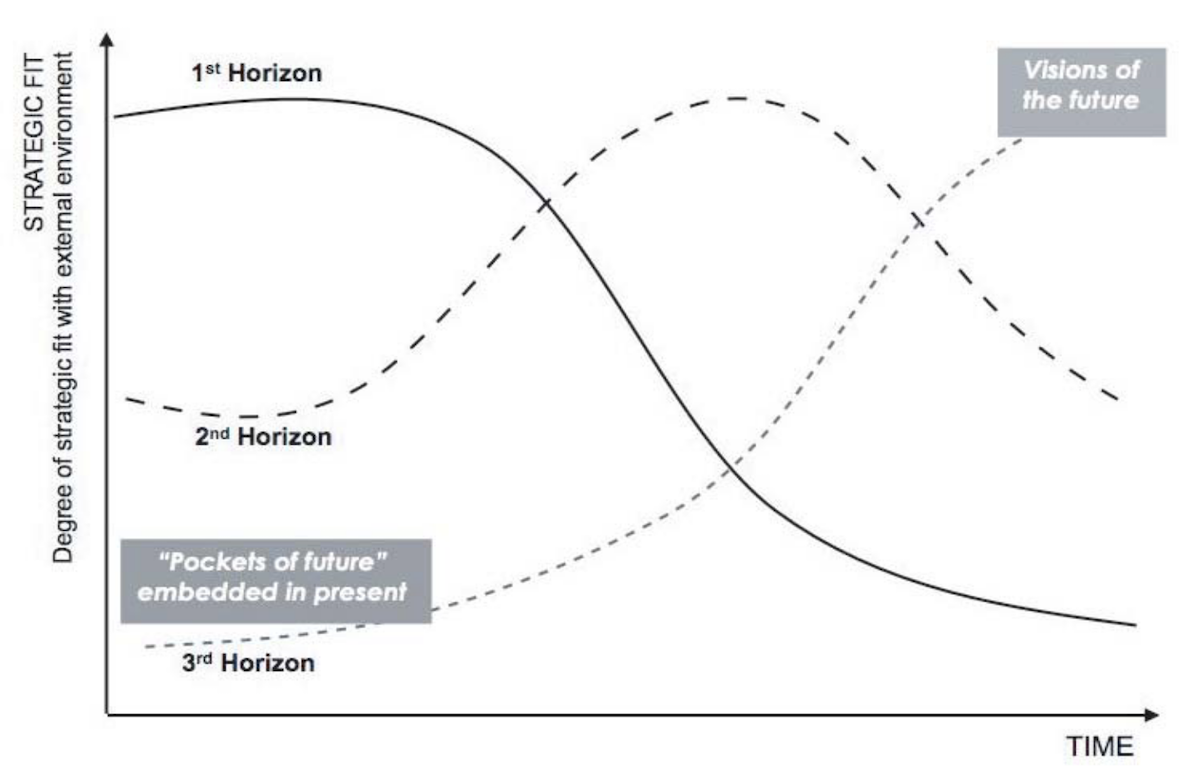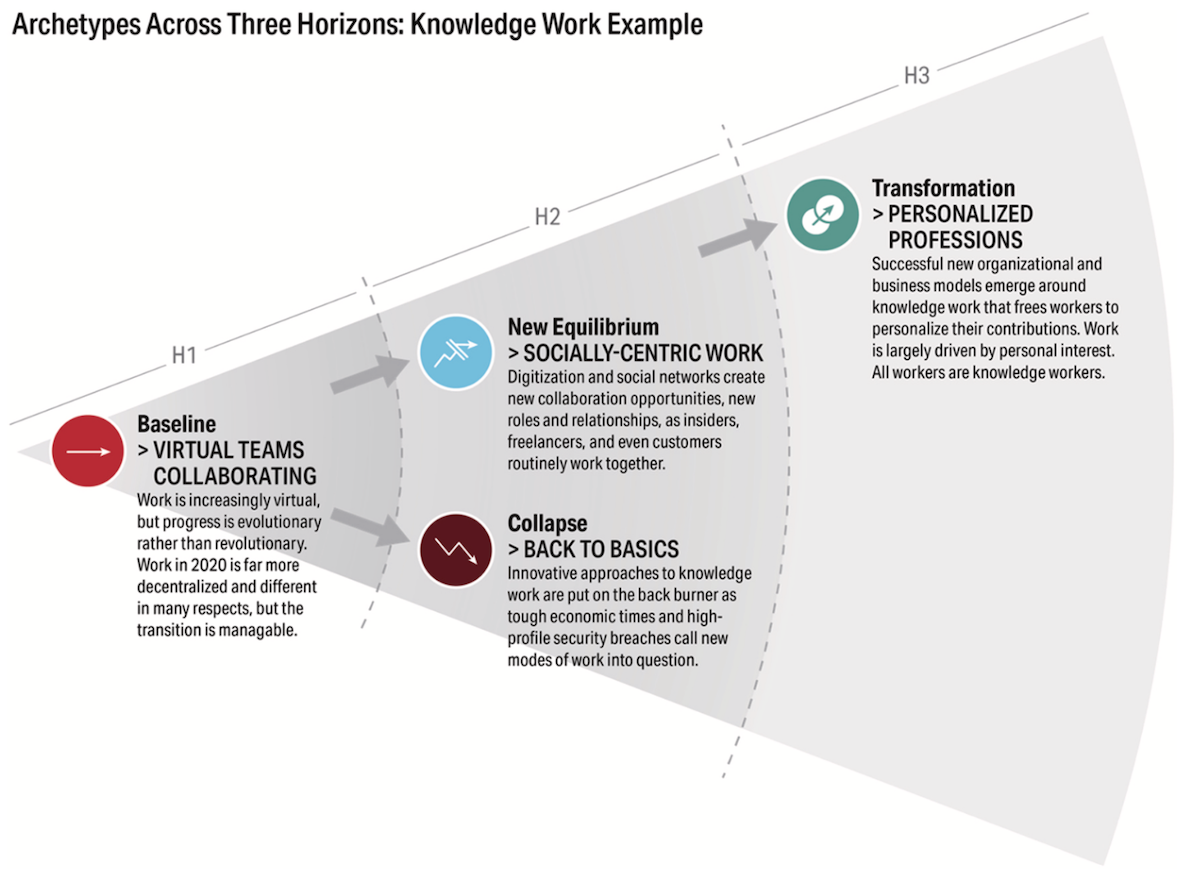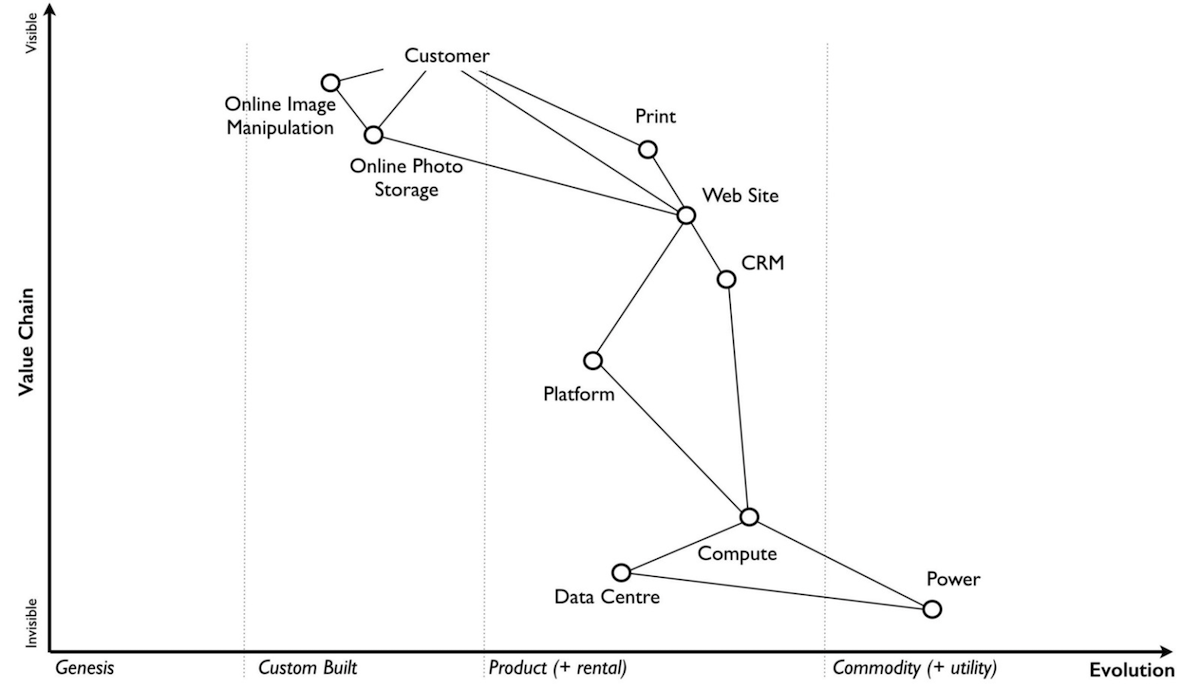Navigating emerging technology
In October 2024 I presented at the Institute for Futures Research 50th Anniversary Masterclass on the topic of Navigating Emerging Technology. Two of the frameworks / techniques that I spoke about are valuable within the product management process.
Three Horizons
The Three Horizons model from Curry, Hodgeson and Sharpe, looks at how the strategic fit of a system changes over time. This change is represented by three horizons.

- Horizon one is your current condition. It starts with high strategic fit and over time that fit slowly declines.
- Horizon three are emergent changes, pockets of the future in the present, initially with low strategic fit, over time become our visions of the future.
- Horizon two is the unstable transition phase where values and possible futures clash.
What I like about this model is first that it is intuitive to someone who has not been exposed to or studied futures thinking. Old ways recede, new ideas take their place, old and new clash in the crossover.
You can also explain it by way of opportunity, with strong links into the Cynefin framework. In H1 both the problem and the solution are clear. In H2, the problem is clear, but the solution is not. And in H3, neither the problem nor the solution is clear.
This makes it a really useful model for introducing colleagues to futures thinking and how that applies practically into strategy. This is especially true in H2, where you can further differentiate between actions that help the transition (H2+) or those that try to delay (H2-) by supporting the continuation of H1.
It also lends itself well to using archetypes - H1 is the manager, H2 is the entrepreneur and H3 is the visionary. In a recent paper Andy Hines mapped his scenario archetypes across the three horizons.

https://doi.org/10.1016/j.futures.2024.103418
Wardley Mapping
“A map is not the territory” - Alfred Korzybski
A Wardley Map visually depicts the components in a system to help you understand it better, so you can make more user-centered strategic decisions.

A wardley map is different to system maps or mind maps because they have these important features:
- They are visual
- They show context
- An anchor
- Position
- Movement
Everything moves through four stages of evolution: Genesis, Custom build, Product, Commodity.
That means everything that is on the left will, due to market forces over time, move to the right.
Old leverages new. The things on the right enable and leverage new things to appear on the left.
By mapping the systems that make up your customer value chain into the stages of evolution you can see where you should build vs buy, and where your opportunity for differentiation sits.
Do only what makes your beer taste better.